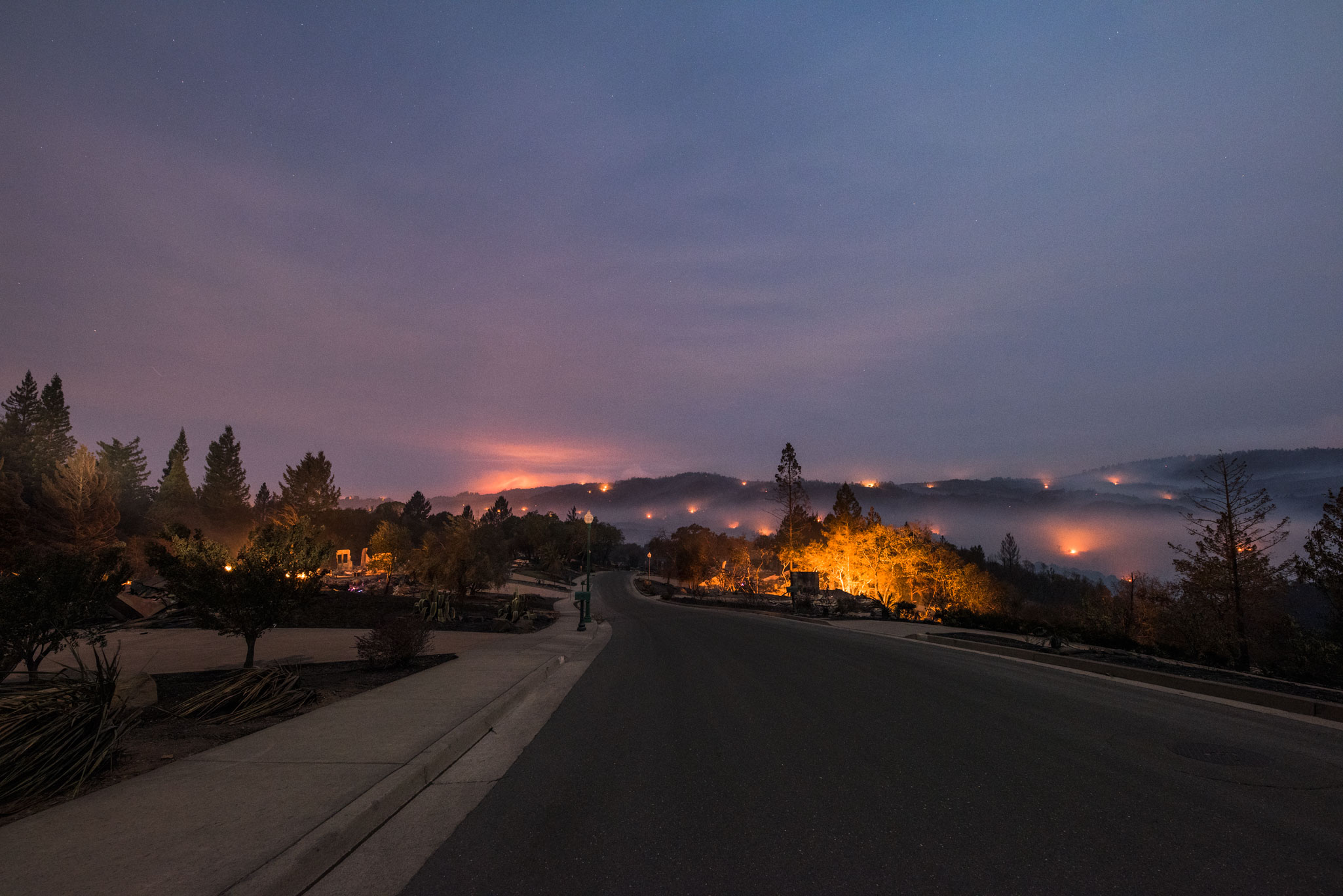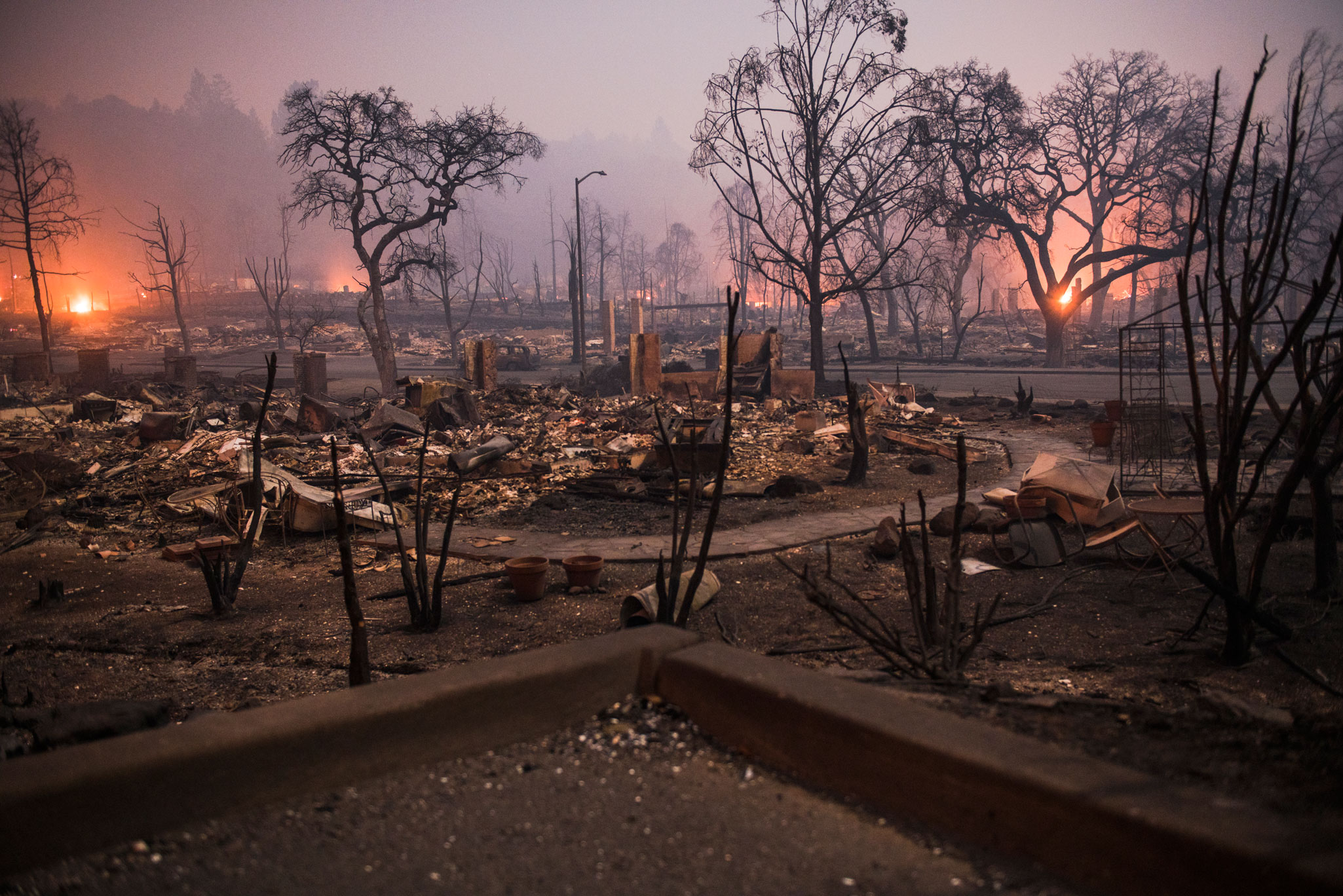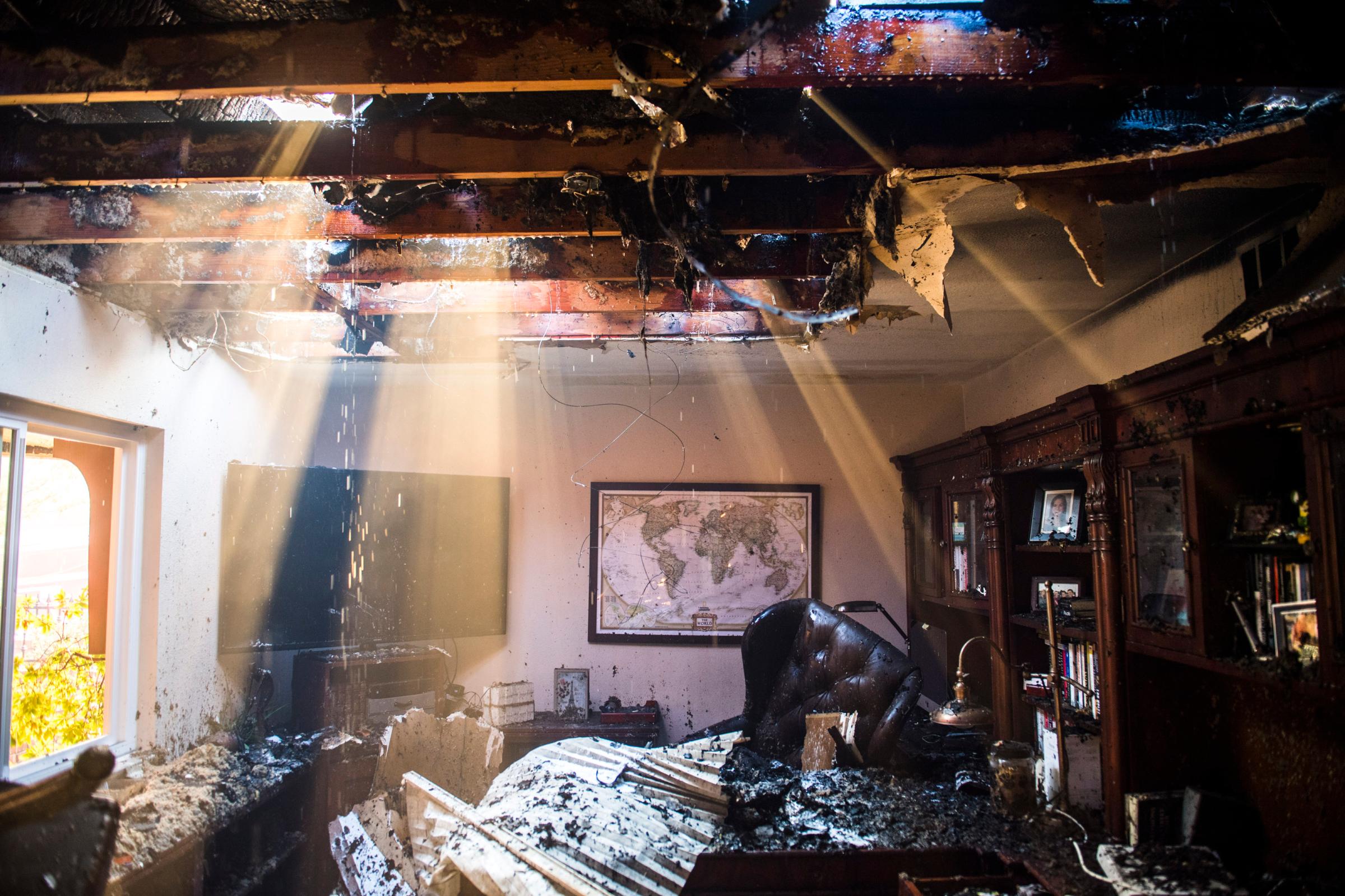
There is no good time for a wildfire to break out, but the middle of the night may be the worst. The darkness makes it hard for firefighters to size up the flames, and people like Eduardo Flores are tucked away in their beds. When Flores, 66, and his wife awoke to find flames nearing their Santa Rosa, Calif., mobile-home park in the early hours of Oct. 9, they hammered on neighbors’ windows and doors, imploring them to wake up–and race out. “By the grace of God, we got out with our lives,” Flores says. “It was literally raining fire. We were choking, gasping for air.” They made it to a safe distance, and then watched their home turn to ash.
As of Oct. 10, 17 large wildfires were burning in California, including one of the worst firestorms the northern part of the state has ever seen. The flames ate through pristine wilderness and manicured communities both, claiming lives and torching homes and businesses as well as wineries in the world-renowned regions of Napa and Sonoma. The blazes left at least 17 people dead, dozens more missing and more than 2,000 structures destroyed. Among the tragic toll were animals unable to escape. One observer said the smell of their charred remains lingered in air thick with ash and the fire retardant dropped by planes flying above.

As an estimated 20,000 people evacuated, Governor Jerry Brown declared an emergency in eight counties and asked the federal government for help. President Trump approved a federal disaster declaration on Oct. 10. “We will be there,” the President said of California, a state that is leading the legal charge against many of his key domestic policies. As Trump spoke, the fires had collectively burned more than 115,000 acres, an area three times the size of San Francisco, where smoke floated down from blazes to the city’s north.
October tends to be the worst month for wildfires in California. The land is parched and humidity is low. And conditions were primed for fires to spread in recent days as gusts of over 50 m.p.h. whipped blazes across ground that had been drying out all summer.

This year’s fire season had “already been an extremely busy one,” says Daniel Berlant, assistant deputy director at the California Department of Forestry and Fire Protection. The state has grappled with more than 7,700 fires in 2017 so far, and their number and intensity has been growing year over year, with bigger blazes causing more destruction during a fire season that is now about 78 days longer than it was in 1970.
Many factors explain why: California only recently emerged from a five-year drought, turning its trees and shrubs into ready-made tinderboxes. A decline in logging has ensured that forests are packed with fuel. And the state’s steadily growing population means a greater risk of fires, with more people in harm’s way. Experts like Scott Stephens, a professor of fire science at the University of California, Berkeley, say climate change is a key part of the equation too. Increased temperatures are making it “more difficult to deal with fire in the state,” he says, “because of drier, longer seasons.”

So does that mean the fires will only get worse? Stephens says there are plenty of small ways Californians can minimize the number of people who find themselves suddenly homeless. Measures range from changing rules about where people are allowed to build to teaching homeowners not to keep firewood near the front porch.
That lesson is little help for those who no longer have porches to go home to. On Oct. 10, with winds dying down, some residents were working their way back into evacuation zones to see what was left. Napa winemaker Clayton Kirchhoff weaved through smoke and back roads only to find that his home was “just gone.” He knew he was lucky to be safe. But he was overcome by big and little questions, like whether the wine he had been tending each day would spoil and turn to vinegar, or what would have happened if he had been asleep when the fire started. For the moment he planned to sift through the rubble, he said, “and see if there’s anything that might have survived.”
–With reporting by MELISSA CHAN/NEW YORK
For more wildfire photography, visit time.com/california-on-fire
More Must-Reads from TIME
- Donald Trump Is TIME's 2024 Person of the Year
- Why We Chose Trump as Person of the Year
- Is Intermittent Fasting Good or Bad for You?
- The 100 Must-Read Books of 2024
- The 20 Best Christmas TV Episodes
- Column: If Optimism Feels Ridiculous Now, Try Hope
- The Future of Climate Action Is Trade Policy
- Merle Bombardieri Is Helping People Make the Baby Decision
Contact us at letters@time.com